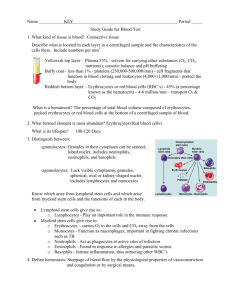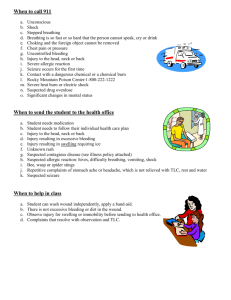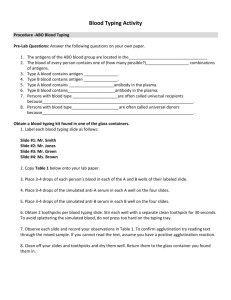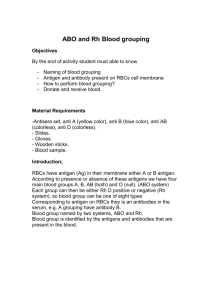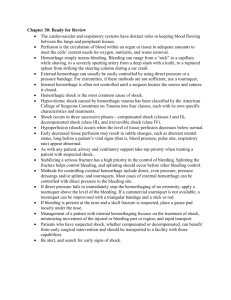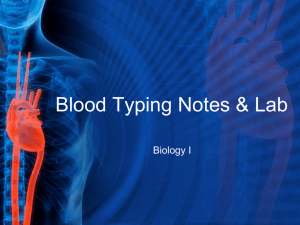Chapter_8_Solutions
advertisement
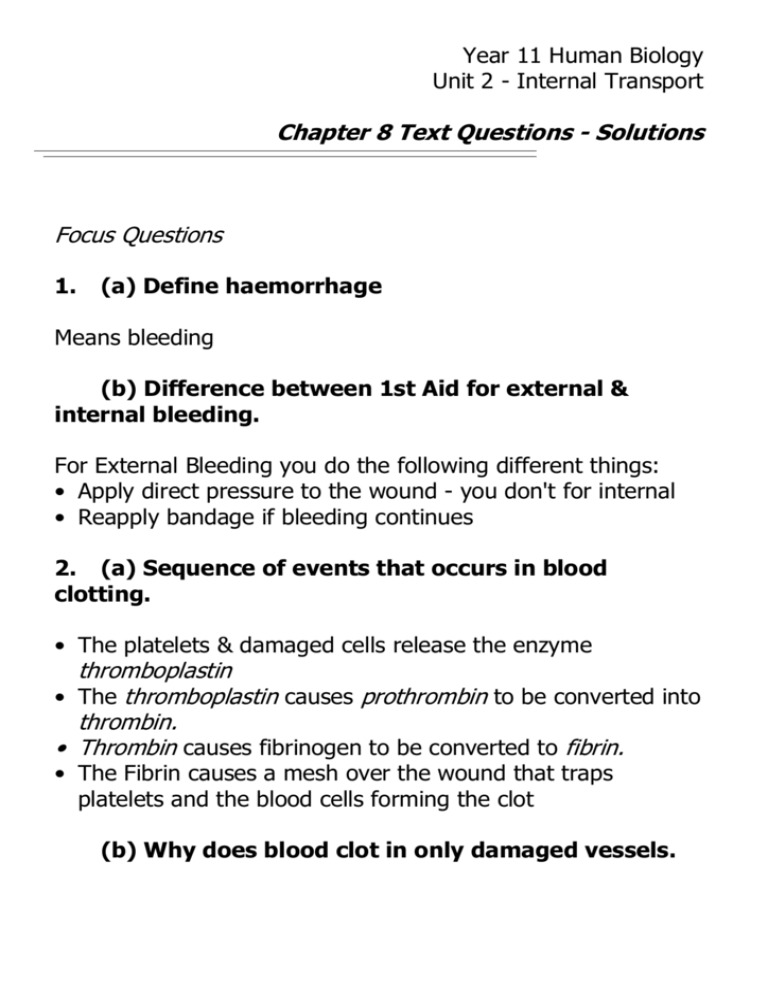
Year 11 Human Biology Unit 2 - Internal Transport Chapter 8 Text Questions - Solutions Focus Questions 1. (a) Define haemorrhage Means bleeding (b) Difference between 1st Aid for external & internal bleeding. For External Bleeding you do the following different things: • Apply direct pressure to the wound - you don't for internal • Reapply bandage if bleeding continues 2. (a) Sequence of events that occurs in blood clotting. • The platelets & damaged cells release the enzyme thromboplastin • The thromboplastin causes prothrombin to be converted into thrombin. • Thrombin causes fibrinogen to be converted to fibrin. • The Fibrin causes a mesh over the wound that traps platelets and the blood cells forming the clot (b) Why does blood clot in only damaged vessels. Because there is a rough surface the clot can adhere to 3. (a) What is shock? Shock is a condition where the supply of blood (and oxygen) to the tissues is insufficient to maintain normal functioning. (b) Signs & symptoms of shock. • • • • • • • • weakness, dizziness, faintness possible loss of consciousness nausesa and possible vomiting cold, clamly skin pale face and lips thirst breathing becoming increasingly shallow yawning or sighing 4. Procedures for 1st Aid of shock victims 1. Patient placed on side 2. Lie patient down (if Possible) 3. Control any external bleeding 4. Loosen any tight clothing 5. Give 1st Aid for any condition that causes shock. 6. Make casualty comfortable 7. Moisten lips, but do not give anything to drink. 8. Monitor breathing & pulse 9. Place casualty on side 10. Seek medical advice. 5. (a) Different between antigen & antibody: An antigen is a capable of stimulating the formation of a specific protein called an antibody. An Antibody is produced in response to an antigen. (b) What antigens and antibodies are involved in the ABO system. B lo o dG ro u p A n tig en A n ti-B o d ies A B A B O A B A&B N E IT H E R A N T I-B A N T I-A N E IT H E R B O T H (c) What determines which ABO people belong to? Genetics 6. (a) How Many Rhesus groups are there? 2 Rh+ & RH(b) What determines the Rh blood group people belong to? Whether they have the antigen. 7. Why must blood be matched for transfusions? So it doesn't clump together - agglutinate. 8. (a) What is anaemia? Reduced number of blood cells (b) Common causes of anemia. • • • • • Large blood loss Iron deficiency Inability to absorb vitamins Destruction of red bone marrow. Inherited diseases - sickle cell anemia. Apply Your Knowledge: 1. Same blood group for donor of blood plasma. No because blood plasma doesn't contain the red blood cells. 2. Testing blood samples. D = Group B E = Group O (Both or either) F = Neither 3. Car accident victim. DRABC 4. ABO Blood groups and transfusions. Blood Group From A B AB O Receive A or O B or O Any ABO AB or O

